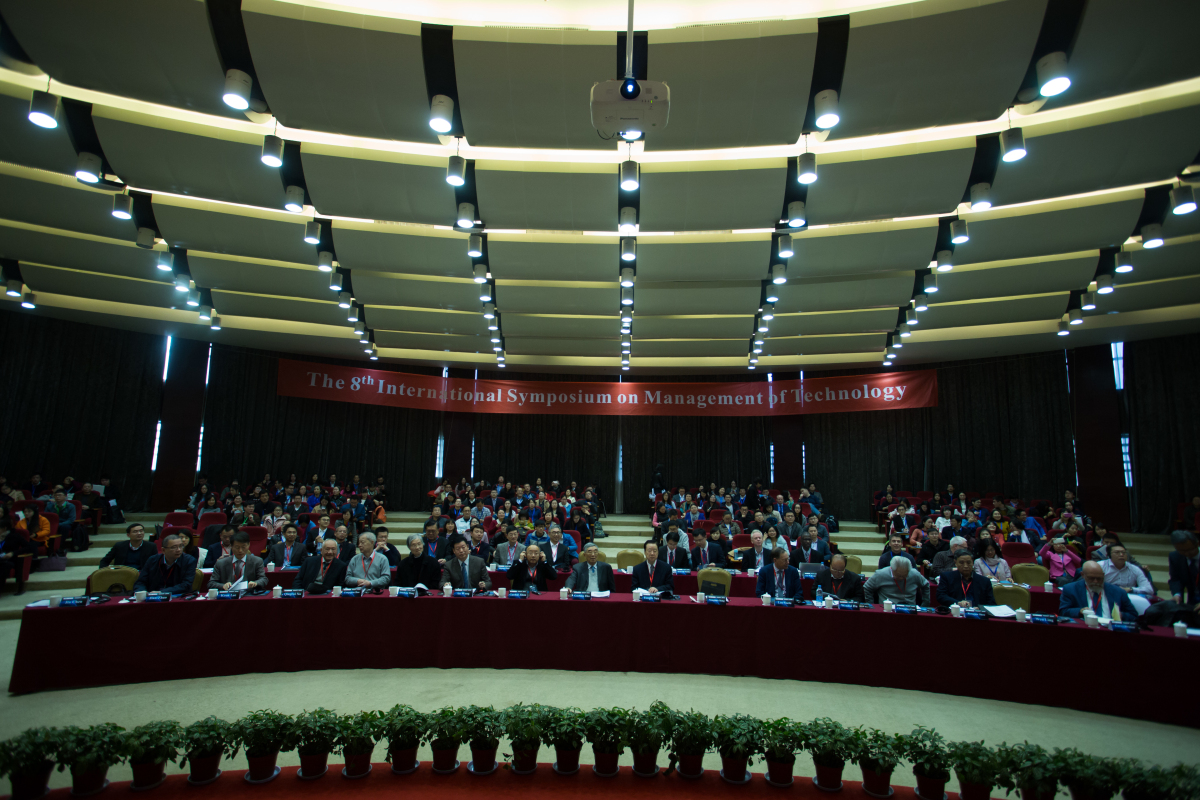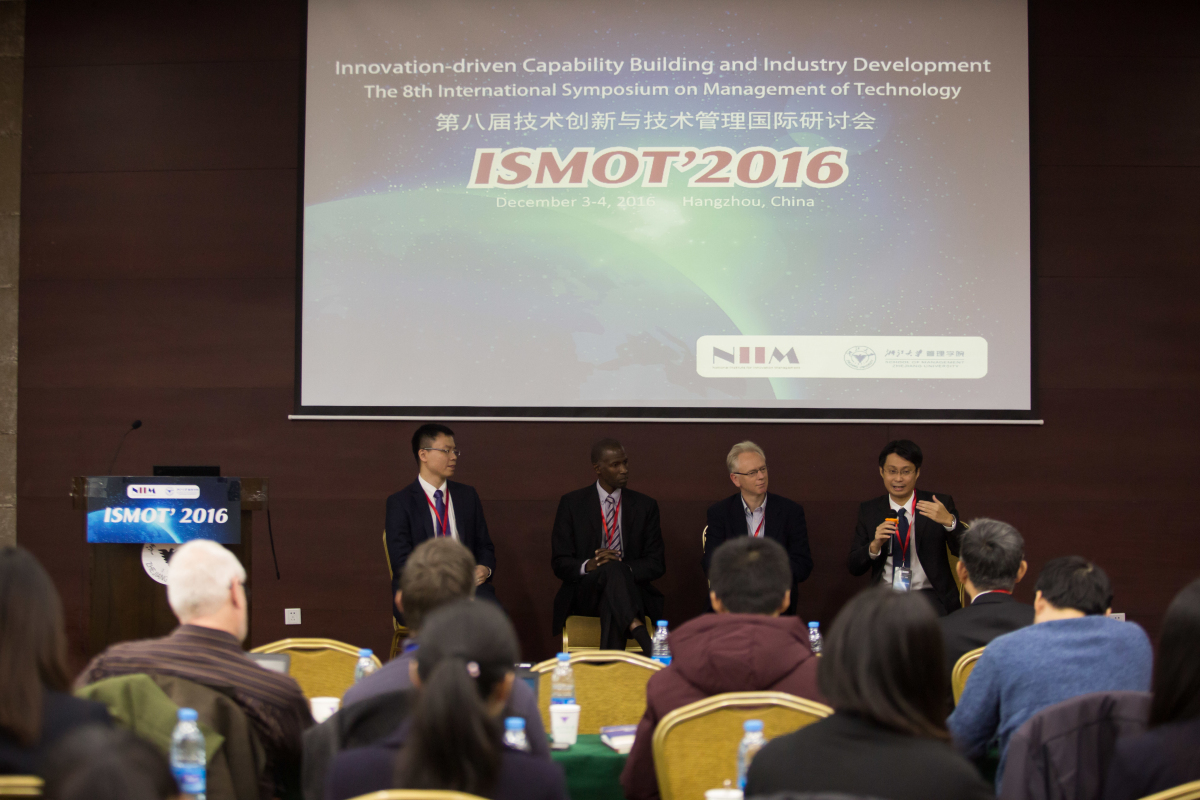2016-12-04

The 8th International Symposium on Management of Technology (ISMOT), which centered on Innovation-driven Capability Building and Industry Development, was held on December 3-4, 2016. ISMOT 2016 brought together more than 300 participants from academia, industry, and government.
On the morning of December 3, Intellectual Properties Panel as a parallel session of ISMOT 2016 was hosted by Prof. Can Huang. Prof. Ian Williamson from Melbourne Business School, Prof. René Belderbos from Maastricht University and Prof. Kenneth Huang from National University of Singapore attended the panel and delivered speeches.

(From left to right: Professors Can Huang, Ian Williamson, René Belderbos and Kenneth Huang)
Prof. Ian Williamson introduced his research on the role of people management in the innovation process. He argues more than just generating good ideas, innovation consists of two steps, the invention of new ideas and the harnessing of these new ideas to create valuable processes, products and services. He believes that different resources are needed for invention and harnessing process, and firm decision about specialized human assets can shape innovation output. For example, the bundling of patent law expertise with R&D may enhance patent production. To put it simply, firms with high levels of R&D, a high number of patent attorneys, and a Top-Management-Team member with patent-law expertise generated 39% more patents than firms with high R&D, a high number of patent attorneys but no TMT member with patent-law expertise.
Prof. René Belderbos presented his work on firms’ IP strategies and location. He argues that geographic proximity increases the risk of knowledge spillovers due to the higher inter-firm employee mobility of proximate firms. In this sense, location choice can be part of firms’ IP strategy. Moreover, benefits from proximity are likely to be asymmetric due to firm heterogeneity. Specifically, technologically leading firms have more to lose and less to gain, compared with technologically lagging firms. One of his main findings is that when choosing locations for additional plants in Japan, leading Japanese manufacturing firms avoid locations with other establishments, in particular if these companies target the same geographic market.
Prof. Kenneth Huang introduced his research on institutional regime shift in IPRs and innovation strategies in China. He argues that institutions that facilitate innovations are critical for competitiveness. However, now we lack understanding of the reactions to institutional regime shift. For example, how do firms from different home countries react when confronted with major change in China’s formal IPR institution? His study shows different responses of Chinese and western firms to China’s IPR law change. Compared with western firms Chinese firms are less responsive to sudden change in formal IPR regulations since western firms experience different institutional environment when entering China, thus more responsive to new IPR regulation.